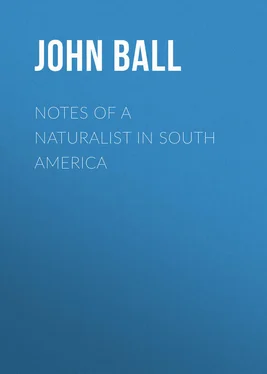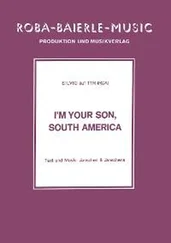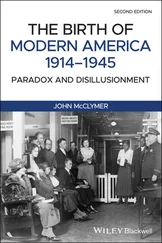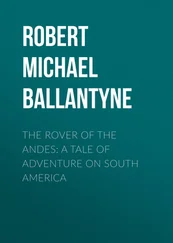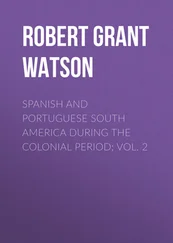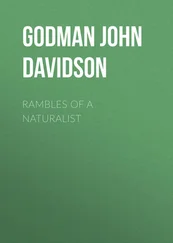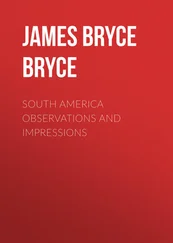John Ball - Notes of a naturalist in South America
Здесь есть возможность читать онлайн «John Ball - Notes of a naturalist in South America» — ознакомительный отрывок электронной книги совершенно бесплатно, а после прочтения отрывка купить полную версию. В некоторых случаях можно слушать аудио, скачать через торрент в формате fb2 и присутствует краткое содержание. Жанр: foreign_antique, foreign_prose, на английском языке. Описание произведения, (предисловие) а так же отзывы посетителей доступны на портале библиотеки ЛибКат.
- Название:Notes of a naturalist in South America
- Автор:
- Жанр:
- Год:неизвестен
- ISBN:нет данных
- Рейтинг книги:4 / 5. Голосов: 1
-
Избранное:Добавить в избранное
- Отзывы:
-
Ваша оценка:
- 80
- 1
- 2
- 3
- 4
- 5
Notes of a naturalist in South America: краткое содержание, описание и аннотация
Предлагаем к чтению аннотацию, описание, краткое содержание или предисловие (зависит от того, что написал сам автор книги «Notes of a naturalist in South America»). Если вы не нашли необходимую информацию о книге — напишите в комментариях, мы постараемся отыскать её.
Notes of a naturalist in South America — читать онлайн ознакомительный отрывок
Ниже представлен текст книги, разбитый по страницам. Система сохранения места последней прочитанной страницы, позволяет с удобством читать онлайн бесплатно книгу «Notes of a naturalist in South America», без необходимости каждый раз заново искать на чём Вы остановились. Поставьте закладку, и сможете в любой момент перейти на страницу, на которой закончили чтение.
Интервал:
Закладка:
For the first time since leaving England the heat at Panama during the midday hours was felt to be oppressive, and we were content with a short stroll, which, to any one familiar with old Spain, offered little novelty. Unlike such mushroom spots as Colon, Panama has all the appearance of an old Spanish provincial town. It has suffered less from earthquakes than most of the places on the west coast, and a large proportion of the buildings, including a rather large cathedral, remain as they were built two or three centuries ago.
As the anchorage for large steamers is about three miles from the town, we had an early summons to go on board a small tender that lay alongside of a half-ruined wharf, but were then detained more than an hour, for no apparent reason other than as a tribute to the habits of the population of this region. The time was not wholly wasted, as even the least observant passengers were struck with admiration at the performances of a swarm of small birds, many hundreds in number, that seemed to have selected the space over the shallow water opposite the town for their evolutions. For more than half an hour they continued to whirl in long loops or nearly circular sweeps, with no other apparent motive than the pleasure of the exercise. Seen from a distance, the appearance was that of a wreath; nearer at hand, the arrangement was seen to be constantly varying. Sometimes the birds were so close together that it seemed as if their wings must jostle; sometimes they were drawn out into long curves, looking silvery white when the sun fell upon their breasts, and of a darker tint at other incidences. Mr. W – asserted that the bird is a kind of snipe, but I have no doubt that it is a tern.
BIRDS IN PANAMA BAY.
At last the little tender glided from the wharf, and for the first time we gained a general view of the town, which has a full share of that element of picturesqueness which is so strangely associated with decay. The old ramparts fast crumbling away, here and there rent by earthquakes, and backed by time-stained buildings, would offer many a study to the painter. Sunset was at hand when we reached the steamer Islay , anchored under the lee of one of the small islands of the bay, and were fortunate in finding among the not too numerous passengers several whose society added to the interest of the voyage.
One of the effects of the habitual use of maps on a small scale is that untravelled persons, even though conversant with the facts of geography, feel it difficult to realize the great dimensions of the more distant parts of the world as compared with our diminutive European continent. Thus it came on me with something of surprise that the Bay of Panama is fully a hundred and twenty sea miles across from headland to headland, and that the run from Panama to Callao, which is scarcely one-third of the length of the South American continent, is rather longer than that from Bergen to the Straits of Gibraltar. The case, of course, is much worse with those accustomed to use maps on Mercator’s projection. It profits nothing to explain, even to the most intelligent youth, the nature and amount of the errors involved in that mode of representing a spherical surface on a plane. I verily believe that all the mischief done by the stupidity, ignorance, and perversity of the writers of bad school-books is trifling compared to the amount of false ideas spread through the world by the productions of that respectable Fleming.
The steamers of the Pacific Mail Company employed for the traffic between San Francisco and Valparaiso are as perfectly suited to the peculiar conditions of the navigation as they would be unfit for long sea-voyages in any other part of the world. In the calm waters of this region, rarely ruffled even by a stiff breeze, the fortunate seamen engaged in this service know no hardships from storm or cold. Their only anxiety is from the fogs that at some seasons beset parts of the coast. In each voyage they pass under a vertical sun, but the air and the water are cooler than in any other part of the equatorial zone; and all that is needed for their physical comfort, and that of their passengers, is free ventilation and shade from the sun. These desiderata are fully secured. The main-deck is open to the air, and the steerage passengers, who are encamped amidships and on the fore-deck, are satisfied at night with the amount of privacy secured by hanging some piece of stuff to represent a curtain round each family group. On the upper deck are ranged the state rooms of the first-class passengers, each with a door and window opening seaward. Above this, again, a spar-deck carried flush from stem to stern affords ample opportunity for exercise, and is itself sheltered from the sun by an awning during the hot hours. In such conditions, where merely to breathe is to enjoy, the only danger is that of subsiding into mere lotus-eating. From this I was fortunately preserved by the rather troublesome task of drying in satisfactory condition the plants which I had hastily gathered in Jamaica and in crossing the isthmus.
PACIFIC COAST STEAMERS.
I had supposed that the distinctly green colour of the water in Panama Bay, so different from the blue tint of the open Atlantic, might be due to some local peculiarity; but on the following day, April 7, while about a hundred miles from land, I observed that the same colour was preserved, and I subsequently extended the observation along the coast to about 5° south, where we encountered the antarctic current. Farther south I should describe the hue of the water as a somewhat turbid dark blue, reminding one of the water of the North Atlantic as seen in approaching the British Islands.
At daybreak on April 8 we found ourselves approaching the port of Buenaventura. Long before it was possible to land I was ready, thrilling with interest and curiosity respecting a region so entirely new – an interest enhanced, perhaps, by the extent of ignorance of which I was inwardly conscious. Knowing this place to be the only port of an extensive tract, including much of the coast region of New Granada, lying only a few degrees from the equator, and rich in all sorts of tropical produce, I had formed a very undue idea of its importance. Although the rise and fall of the tide are very moderate on this coast, the ricketty wooden wharf could not be reached at low water. There was nothing for it but to land on the mud, and scramble up the slippery slope to the top of the bank of half-consolidated marl, from twenty to forty feet above the shore, on which the little town is built. It consists of some two hundred houses and stores, nearly all mere plank sheds, but, as usual throughout South America, the inhabitants rejoice in dreams of future wealth and importance to be secured by a railway communicating with the interior. There was no time to be lost; notice had been given that the ship’s stay was to be very brief, and even before landing it was apparent that the tropical forest was close at hand. In truth, the last houses are within a stone’s throw of the skirts of the forest. Just at this point I was attracted by a leafless bush, evidently one of the spinous species of Solanum , with large, yellow, obversely pear-shaped fruits. As I was about cutting off a specimen, the people, who here seemed very friendly, rushed out of the nearest house and vociferated in warning tones, “Mata! mata!” I was afterwards assured that the fruit is here considered a deadly poison. It appears to be one of the rather numerous varieties of Solanum mammosum , a species widely spread through the hotter parts of America.
FIRST VIEW OF A TROPICAL FOREST.
Being warned not to go out of hearing of the steam-whistle that was to summon us back to the ship, I was obliged to content myself with three short inroads into the forest, through which numerous paths had been cleared. The first effect was perfectly bewildering. The variety of new forms of vegetation surrounding one on every side was simply distracting. Of the larger trees I could, indeed, make out nothing, but the smaller trees and shrubs, crowded together wherever they could reach the daylight, were more than enough to occupy the too short moments.
Читать дальшеИнтервал:
Закладка:
Похожие книги на «Notes of a naturalist in South America»
Представляем Вашему вниманию похожие книги на «Notes of a naturalist in South America» списком для выбора. Мы отобрали схожую по названию и смыслу литературу в надежде предоставить читателям больше вариантов отыскать новые, интересные, ещё непрочитанные произведения.
Обсуждение, отзывы о книге «Notes of a naturalist in South America» и просто собственные мнения читателей. Оставьте ваши комментарии, напишите, что Вы думаете о произведении, его смысле или главных героях. Укажите что конкретно понравилось, а что нет, и почему Вы так считаете.
